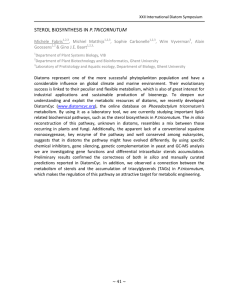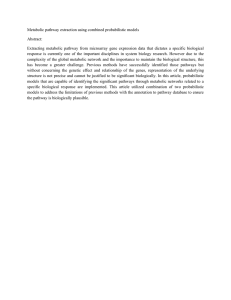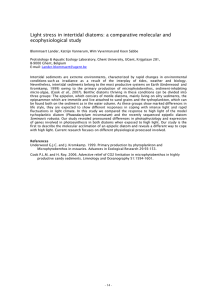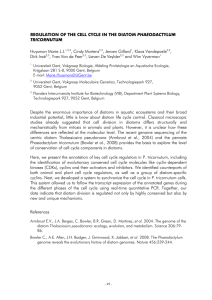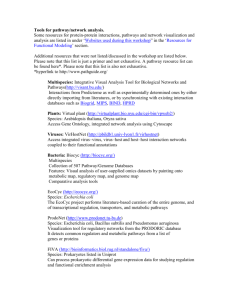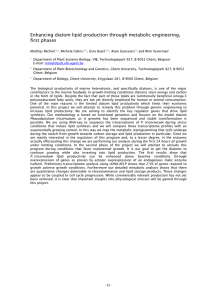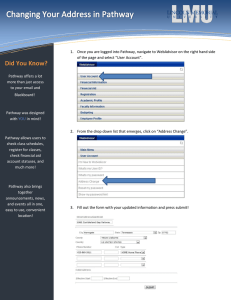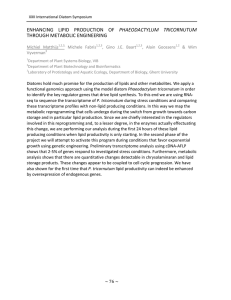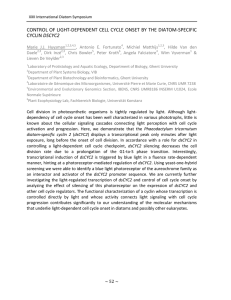DIATOMCYC Michele Fabris , Michiel Matthijs
advertisement
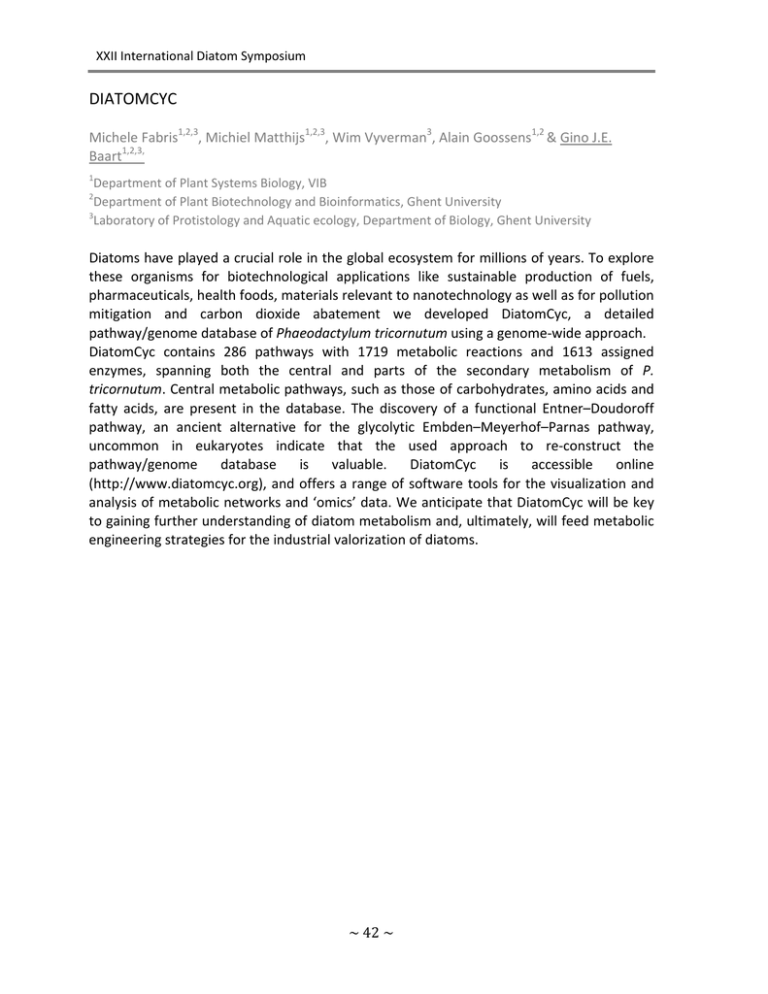
XXII International Diatom Symposium DIATOMCYC Michele Fabris1,2,3, Michiel Matthijs1,2,3, Wim Vyverman3, Alain Goossens1,2 & Gino J.E. Baart1,2,3, 1 Department of Plant Systems Biology, VIB Department of Plant Biotechnology and Bioinformatics, Ghent University 3 Laboratory of Protistology and Aquatic ecology, Department of Biology, Ghent University 2 Diatoms have played a crucial role in the global ecosystem for millions of years. To explore these organisms for biotechnological applications like sustainable production of fuels, pharmaceuticals, health foods, materials relevant to nanotechnology as well as for pollution mitigation and carbon dioxide abatement we developed DiatomCyc, a detailed pathway/genome database of Phaeodactylum tricornutum using a genome‐wide approach. DiatomCyc contains 286 pathways with 1719 metabolic reactions and 1613 assigned enzymes, spanning both the central and parts of the secondary metabolism of P. tricornutum. Central metabolic pathways, such as those of carbohydrates, amino acids and fatty acids, are present in the database. The discovery of a functional Entner–Doudoroff pathway, an ancient alternative for the glycolytic Embden–Meyerhof–Parnas pathway, uncommon in eukaryotes indicate that the used approach to re‐construct the pathway/genome database is valuable. DiatomCyc is accessible online (http://www.diatomcyc.org), and offers a range of software tools for the visualization and analysis of metabolic networks and ‘omics’ data. We anticipate that DiatomCyc will be key to gaining further understanding of diatom metabolism and, ultimately, will feed metabolic engineering strategies for the industrial valorization of diatoms. ~ 42 ~
